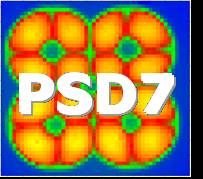Speaker
Dr
Nick Waltham
(Space Science and Technology Department, Rutherford Appleton Laboratory)
Description
We describe our programme to develop a large-format, science-grade,
monolithic CMOS active pixel sensor for future space science
missions, and in particular an extreme ultra-violet spectrograph for
solar physics studies on ESA’s Solar Orbiter. Our route to EUV
sensitivity relies on adapting the back-thinning and rear-
llumination techniques first developed for CCD sensors. Our first
large-format sensor consists of 4kx3k 5µm pixels fabricated on a
0.25 µm CMOS imager process. Wafer samples of these sensors have
been thinned by e2v technologies with the aim of obtaining good
sensitivity at EUV wavelengths. We present results from both front
and back-illuminated versions of this sensor.
We also present our plans to develop a new sensor of 2kx2k 10 µm
pixels which will be fabricated on a 0.35 µm CMOS process. In
progress towards this goal, we have designed a test-structure
consisting of six arrays of 512x512 10 µm pixels. Each of the arrays
has been given a different pixel design to allow verification of our
models, and our progress towards optimizing a design for minimal
system readout noise and maximum dynamic range. These sensors will
also be back-thinned for characterization at EUV wavelengths.
Primary author
Dr
Nick Waltham
(Space Science and Technology Department, Rutherford Appleton Laboratory)
